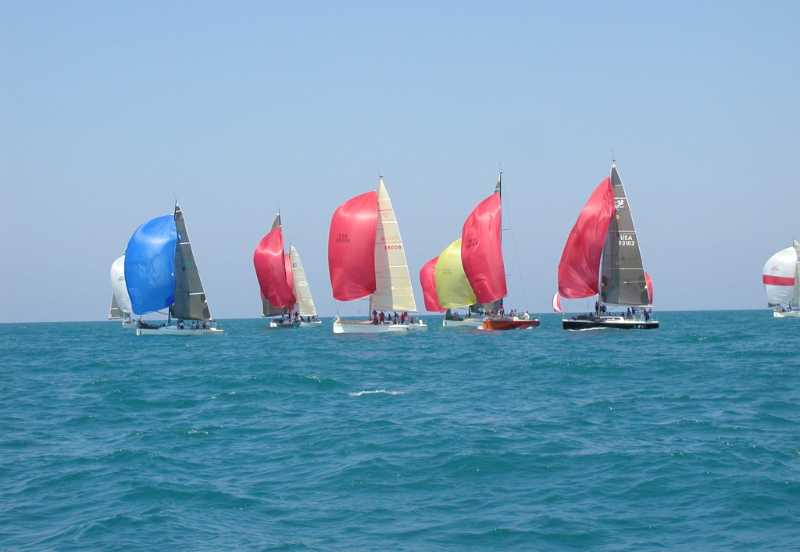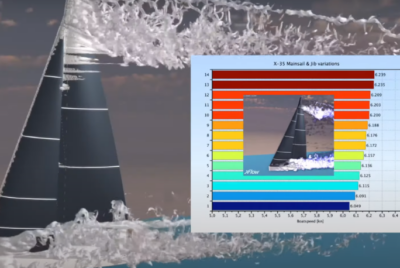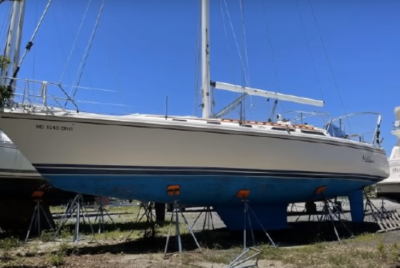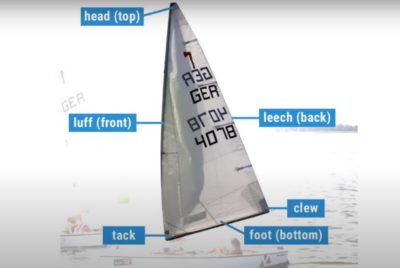What is a Spinnaker Sail Used For?
People often asked me about the various types of sails used in sailing and their specific purposes. One particular sail that holds immense value and versatility in the sailing world is the spinnaker sail. In this article, I will provide you with a comprehensive understanding of what a spinnaker sail is and why it is an essential tool for sailors seeking to harness the power of the wind and enhance their sailing experience.
Introduction
Sailing is a captivating sport that relies on harnessing the power of the wind to propel a boat through the water. Sailors utilize different types of sails to take advantage of varying wind conditions and angles. Among these sails, the spinnaker sail stands out for its distinct characteristics and functions.
What is a Spinnaker Sail?
A spinnaker sail is a large, often colorful, sail that is specifically designed for sailing downwind. It is a secondary sail, typically used in addition to the main and jib sails. The primary purpose of a spinnaker is to catch the wind from the opposite side of the boat, allowing it to generate lift and propulsion, even when sailing with the wind behind.
How Does a Spinnaker Sail Work?
Shape and Design
The shape and design of a spinnakers are crucial to its functionality. Unlike other sails, a spinnaker has a symmetrical or asymmetric shape, depending on the type. Symmetric spinnakers have equal halves on either side, while asymmetric spinnakers have one side larger than the other.
Use of Wind Power
When sailing downwind, the wind hits the front of the spinnaker and creates pressure on the sail’s surface. This pressure generates lift and pushes the boat forward, effectively harnessing the wind’s power. By utilizing the wind from a different angle than the main sails, a spinnaker allows sailors to optimize their speed and performance.
Types of Spinnaker Sails
Asymmetric Spinnaker
An asymmetric spinnaker is the more common type used in modern sailing. It has a distinct shape, resembling a curved parachute. This design allows for easier handling and greater maneuverability, making it suitable for cruising, racing, and recreational sailing.
Symmetric Spinnaker
Symmetric spinnakers are traditional spinnaker that have equal halves on both sides. They are primarily used in racing and require more skill and coordination to handle effectively. While symmetric spinnakers may be less versatile than their asymmetric counterparts, they can still provide excellent performance in the right conditions.
When and Where to Use a Spinnaker Sail?
Optimal Wind Conditions
Spinnakers are most effective in light to moderate wind conditions, typically between 6 and 20 knots. These sails excel when sailing at broad reaching or running angles, where the wind is coming from behind the boat. They may not perform optimally in heavy winds, as the boat’s control can become challenging.
Suitable Boats and Races
Spinnakers are commonly used in racing sailboats and cruising yachts. They offer a significant advantage when competing in races that involve downwind legs. Cruising sailors also enjoy the benefits of a spinnaker sail, particularly during relaxed sailing trips or long-distance cruising, where maximizing speed is not the primary concern.
Benefits of Using a Spinnaker Sail
Increased Speed and Performance
One of the main advantages of using a spinnaker is the significant increase in speed and performance it provides when sailing downwind. By capturing the wind from a different angle, a spinnaker sail enables sailors to maintain momentum and reach higher speeds, even in light wind conditions.
Downwind Sailing
A spinnaker allows sailors to make the most of downwind sailing, a thrilling experience where the boat surges forward with the wind pushing from behind. It adds excitement and a sense of adventure to the sailing journey, as the boat glides smoothly through the water, propelled by the forces of nature.
Competitive Advantage
In the realm of competitive sailing, using a spinnaker can give you a significant edge over your competitors. By optimizing your downwind speed and efficiency, you can gain valuable time and positions during races. A well-handled spinnaker sail can make a noticeable difference in the final results, leading to victories and personal achievements.
How to Use a Spinnaker Sail?
Rigging and Deployment
Proper rigging and deployment of a spinnaker sail is essential for its effective use. Before setting sail, it is crucial to ensure that all lines and fittings are properly attached and adjusted. Once ready, the sail can be hoisted, and the sheets and control lines can be adjusted to achieve the desired sail shape and trim.
Handling Techniques
Handling a spinnaker sail requires coordination and skill. Sailors need to understand the principles of sail trim, including controlling the sail’s shape and angle to optimize performance. Learning how to gybe or jibe the sail safely is also crucial, as it involves a maneuver where the boat changes its course while keeping the spinnaker sail flying.
Tips for Spinnaker Sail Handling
Communication and Teamwork
When using a spinnaker sail, effective communication and teamwork are vital. Sailing is a team sport, and coordinating actions with your crewmates ensures smoother sail handling and maneuvering. Clear communication helps to avoid misunderstandings and prevents accidents, ensuring a safe and enjoyable sailing experience.
Safety Considerations
While spinnaker sailing can be thrilling, safety should always be a top priority. It is essential to wear life jackets or personal flotation devices (PFDs) and maintain a constant lookout for any potential hazards. Understanding weather conditions, boat limitations, and having a plan for emergency situations are crucial for safe spinnaker sail handling.
Maintaining and Storing a Spinnaker Sail
Cleaning and Drying
To prolong the lifespan of a spinnaker sail, regular cleaning and proper maintenance are essential. After each use, the sail should be rinsed with fresh water to remove any salt or dirt accumulation. It is crucial to allow the sail to dry completely before storing it to prevent mildew or mold growth.
Proper Storage Techniques
When not in use, a spinnaker sail should be carefully stored to maintain its shape and condition. It is recommended to roll or fold the sail neatly and store it in a dry, well-ventilated area. Avoid exposing the sail to direct sunlight or extreme temperatures, as they can cause damage to the fabric over time.
Conclusion
In conclusion, a spinnaker sail is a valuable asset for sailors seeking to enhance their sailing experience and maximize their performance when sailing downwind. By harnessing the wind’s power from a different angle, a spinnaker sail offers increased speed, excitement, and a competitive advantage. With proper handling and maintenance, this versatile sail can become a trusted companion for both racing and cruising enthusiasts.
FAQs
Can a spinnaker be used in all wind conditions?
While spinnaker sails are most effective in light to moderate wind conditions, they may not perform optimally in heavy winds. It is important to assess the wind strength and boat’s handling capabilities before deploying a spinnaker.
Are spinnakers difficult to handle?
Spinnaker sails require coordination and skill to handle effectively. With proper training and practice, sailors can become proficient in spinnaker sail handling techniques and enjoy the benefits it offers.
Can any sailboat use a spinnaker sail?
Spinnaker sails are commonly used in racing sailboats and cruising yachts. However, not all sailboats are equipped with the necessary rigging and hardware to accommodate a spinnaker sail.
How long does a spinnaker sail last?
The lifespan of a spinnaker sail depends on various factors, such as usage, maintenance, and quality of materials. With proper care and maintenance, a well-constructed spinnaker can last several years.
Can I use a spinnaker for upwind sailing?
Spinnaker sails are designed for downwind sailing and are not suitable for upwind sailing. For upwind conditions, other sails like the mainsail and jib are more appropriate.




